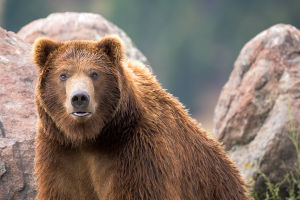In the ancient legends of Central North America, there is a bird known to bring happiness. It guides lost travelers to their destinations, and lost souls to their homes, and its presence brings good luck and happiness to homeowners.
The blue jay, with its distinctive appearance and unique qualities, is beloved by locals for these reasons.
Blue jay is a colorful, talkative bird commonly found in North America and other regions. Appropriately named the "blue-crowned chattering bird," it is also known as the bluebird and jay.
The blue jay measures around 9-12 inches in body length, weighs about 2.5-3.5 ounces, and has a lifespan of about seven years. Currently, the overall population of the species is stable and it is not considered an endangered animal. Interestingly, legend has it that in ancient China, there was a green bird, and some speculate that this bird may have been the blue jay.
Male and female blue jays have similar coloring, with black eyes, black legs, and a black bill. The bird's white face is adorned with a blue crown, and its wings, tail, and back are also blue. A U-shaped collar of black feathers extends around the neck to the sides of the head.
The wing and tail feathers are a striking combination of black, light blue, and white. The jay's feathers are actually brown but appear blue due to light interference in the feather structure. Crushing the feathers would cause the blue color to disappear.
Adult males are slightly larger than females. On average, the blue jay is a medium-sized bird, measuring 9 to 12 inches in length and weighing between 2.5 and 3.5 ounces.
Like crows and other jays, blue jays are highly intelligent. Captive blue jays have been observed using tools to obtain food and latching devices to open their cages. They raise and lower their crown feathers as a form of nonverbal communication and use a variety of calls to vocalize. They can even mimic the calls of hawks and other birds of prey.
Blue jays may mimic hawks to warn of the presence of predators or to trick other species into moving away from food or nesting sites. While some blue jays migrate, it is unclear how they decide when or if to move south for the winter.
Blue jays are monogamous birds that nest and raise their young together. Mating usually takes place between mid-April and July, with the birds laying one clutch of eggs per year.
Jays build cup-shaped nests from twigs, feathers, plant matter, and sometimes dirt. Nests near human habitation may contain cloth, string, and paper. Females lay three to six eggs with gray or brown spots.
The International Union for Conservation of Nature (IUCN) classifies the blue jay's conservation status as "Least Concern". Although deforestation in eastern North America has temporarily reduced the species' population, blue jays have adapted to urban habitats, and their numbers have remained stable for the past 40 years.
With their striking appearance and intelligence, the blue jay is truly a remarkable bird.


